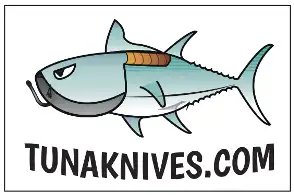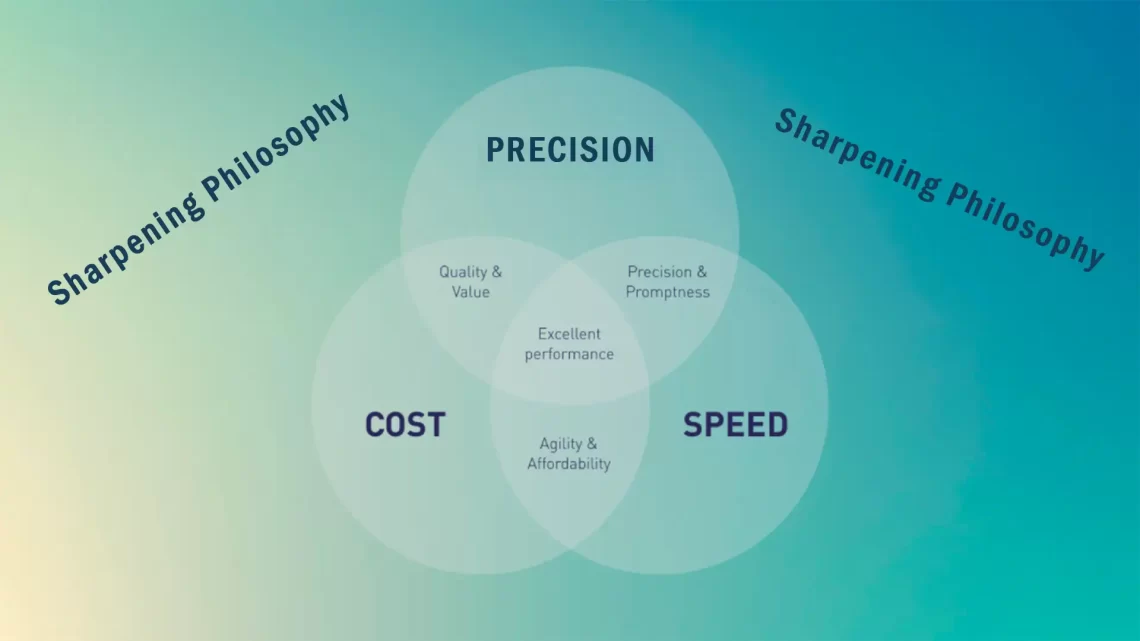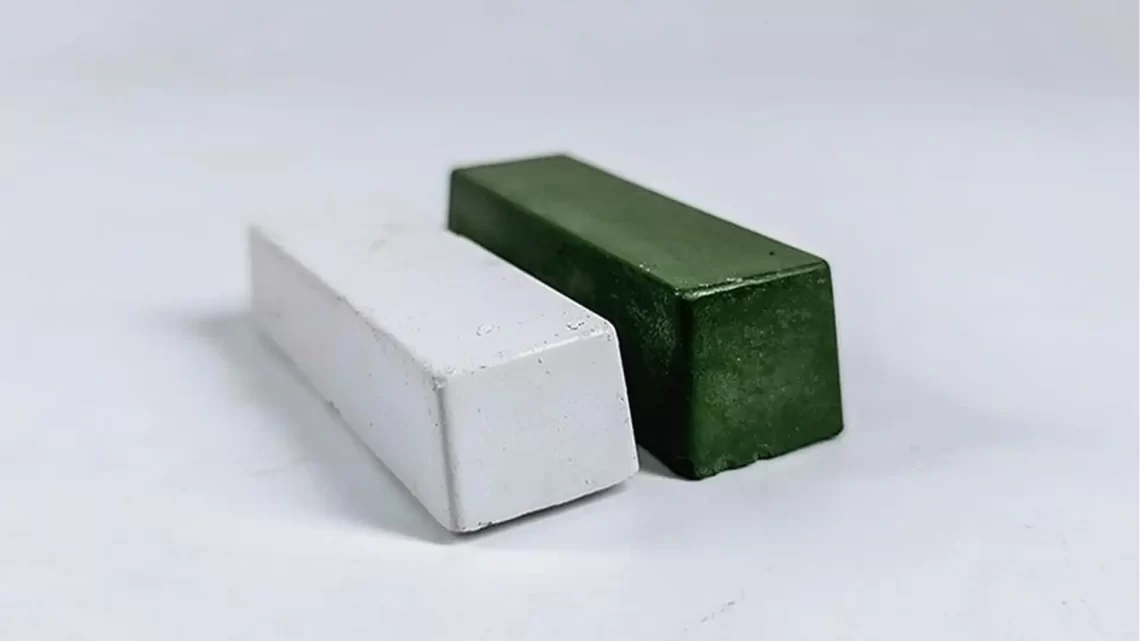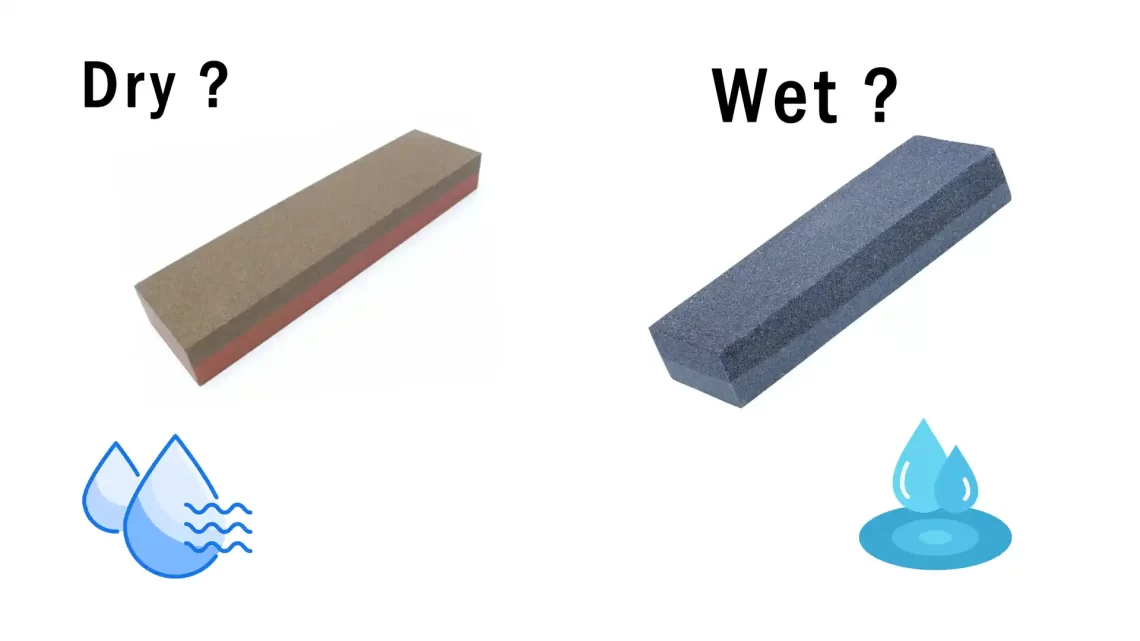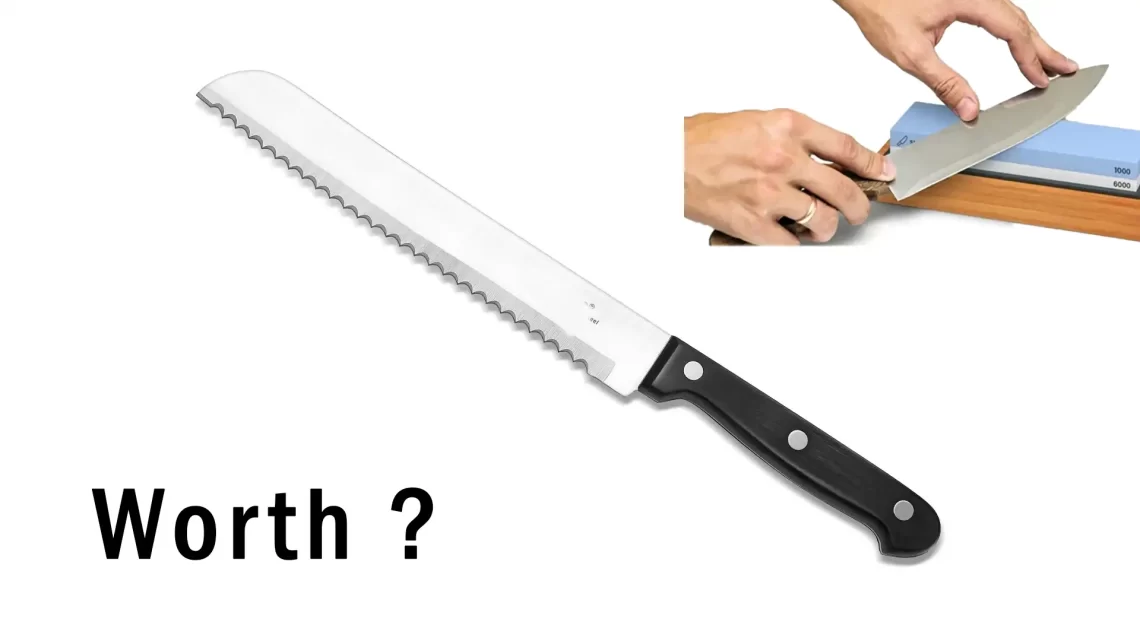This post is one of a series of “discussions” that will look deeper into each of the main categories of a sharpener’s philosophy. To recap, they are as follows:
- Speed vs. Cost vs. Precision (-pick any 2)
- Mechanized vs. Manual Sharpening
- Guided vs. Freehand Sharpening
- Maintenance vs. Full Service Sharpening
This installment looks deeper into the most influential category – Speed vs. Cost vs. Precision. It is one that will ultimately permeate every level of decision making in regards to your sharpening tools and supplies. Don’t forget that you can only pick 2 of the 3!
COST
I’m addressing cost first because money is always an influential factor, if not the most influential factor. Of course everyone wants the best quality for the cheapest price, but in the end your budget will usually dictate what the most affordable/best items will be, even if it means saving up a little for it. *If you are someone who just needs the best/most expensive of everything, please ignore this section entirely!
Luckily, in the world of sharpening it pretty much holds true that “you get what you pay for.” As I’ve previously mentioned, just about every sharpening product works, but that doesn’t mean that every sharpening product will work best for your specific situation(s). For example, if you go super cheap for high volume sharpening (50+ edges on a daily or weekly basis), you will probably pay for what you get in terms of the extra time/money spent or the lack of resulting precision. Conversely, you may not necessarily need the most expensive equipment out there if you only need sharpen or maintain 1 or 2 knives or tools per month.
I like to break costs into 3 general categories based on price vs. use – Economy, Regular, and Premium. It’s by no means perfect, or the only way to approach this. Basically, Economy is just that – minimal cost for minimal use; Regular is mid-range price for average usage, and Premium is higher prices for everyday/heavy use. Once you determine your usage requirements, you can sort through equipment and supplies from the price range that better reflects your needs. Personally, I recommend purchasing the “best” in a given price category, or the lowest in the next category up – so if the price range for a given category is between $50 – $100, I would be looking at the $90- $110 range. This will give you the most performance for your usage, and if you decide to increase your sharpening load in the future, the equipment can handle it (to a point).
SPEED
For many, speed is a critical factor in choosing to sharpen in a given manner. At this larger level of the philosophy, we are looking at the speed variable in terms of it’s overall importance when weighing it against cost and precision, and here, speed is more about the time you wish to spend sharpening – not about how long it takes to sharpen. For example, faster speeds are more ideal if sharpening is considered a chore, is not the focus, or is in a setting where time is money. Conversely, slower speeds are better suited for perfectionists, hobbyists, and those who enjoy the Zen of sharpening.
At the next level of philosophy (mechanized vs. manual sharpening), the weight that speed has on your philosophy will most likely direct you towards a manual or mechanized approach. But speed vs. cost vs. precision is still pervasive, and even within manual and mechanized sharpening approaches, the speed in terms of the rate of abrasion will still need to be juggled with cost and precision factors.
PRECISION
In real life, the saying that cost vs. speed vs. precision goes ” Cheap, Fast, Good – pick any two”. The Good implies quality, but since just about all the sharpening equipment and supplies out there will work (but doesn’t mean they won’t break if you drop them), “good” has been replaced with “precision”. Precision here refers to the level of accuracy and consistency a product delivers over time. This is important because the purpose of sharpening is to abrade metal, and in doing so, every sharpening product will wear (even diamonds), and will either need to be trued or replaced.
In general, more precision is gained from harder abrasives, such as diamonds, and stronger or harder matrices that hold them in place. This minimizes changes in angles and shape of the edges since the abrasive medium wears slower than the material being abraded. Softer abrasives and matrices wear at rate more similar or even less than the material being abraded, which tends to round the edges and increase the edge angles.
The pros and cons of both hard and soft abrasives and their matrices are highly debatable since you may want more or less precision at different points in the sharpening process (don’t forget – the answer to every sharpening question is “it depends”). At this larger level of the philosophy, the precision offered by a product will usually influence the price.
CONCLUSION
No matter which level of philosophy is discussed, the cost vs. speed vs. precision aspect will need to be addressed before making a purchase. Having a more solidly formed idea of your stance in the larger sense will help you when narrowing down your purchasing options in the future. Cost is easily the most tangible factor, but getting beyond the money and into the real reasons for sharpening and what you want to achieve are crucial to being happy with your decisions. Lastly, while the adage says to pick only two, it is really about finding the balance between the cost, speed and precision, because each one influences the other 2.
